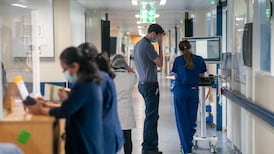This is a story about how two very small deals . . .
When Lydia Mwape arrived at a district hospital in Kawambwa, an isolated town in north Zambia, in May, 2017, she did not know she was about to give birth to twins.
But that wasn’t even half the story.
The girls were born about 1,000km north of the country's capital. "At the time it was not known it was a twin pregnancy, or that they were conjoined twins," says paediatric surgeon Dr Bruce Bvulani of Lusaka's University Teaching Hospital (UTH), the largest and main hospital in Zambia.

"So, because of a prolonged labour, a C-section was done by the local doctor there. When it was realised they were conjoined, they were referred to UTH. They were in Lusaka within two days."
. . . became one very big deal
It was the beginning of a long journey for the girls, their family, the hospital, and the southern African country known for its wildlife, waterfalls and rugged terrain. And it culminated, earlier this year, in a team of surgeons conducting the first medical procedure in Zambia where a set of conjoined twins was successfully separated.
It was a landmark moment for the country, a complex surgery many western countries have not yet attempted. In 2010, Hassan and Hussein Benhaffaf from Cork were successfully separated following a 14-hour operation in London. Cork-born consultant paediatric surgeon Edward Kiely carried out the operation at Great Ormond Street Hospital for Children, along with a team of up to 30 doctors. Similar to Bupe and Mapalo Mwape, the Irish twins were joined at the chest.
The Zambian babies were omphalopagus twins – connected from the breastbone to the waist. For the busy Lusaka hospital, the unusual guests presented an exciting opportunity.
Up to now, a rare, complicated condition such as conjoined twins would have meant one thing – securing foreign intervention.
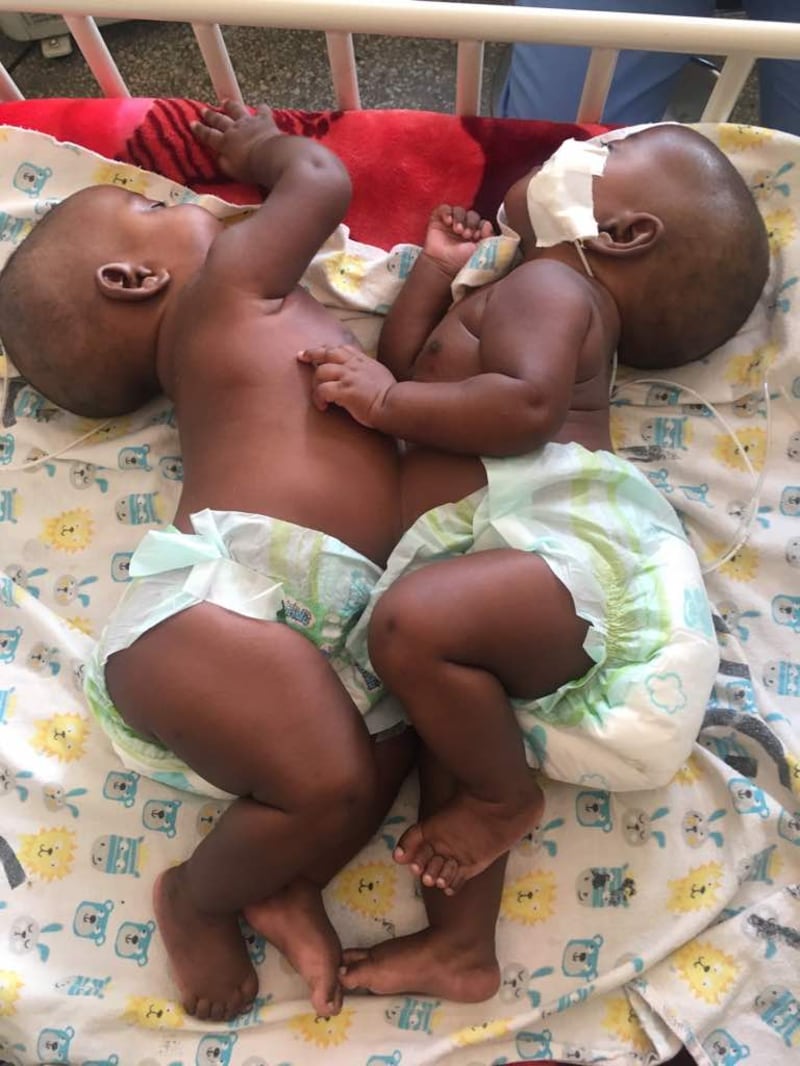
This a story about resources . . .
"In the past, these cases would be sent for surgery in South Africa or India or wherever," says Dr Robert Zulu, one of the lead surgeons involved in the separation and head of one of the five specialised hospitals with UTH. "We had several meetings – debating, arguing, looking at the X-rays, scans, ultrasound, lab results, looking at the environment, the infrastructure that we have and the intensive care. Whether we were able to manage. So, for eight months, we were meeting."
Having the surgery in Zambia was never a lock. There was a plan to secure passports for the twins when the argument looked to be edging towards sending them abroad. “But when the team decided they had the requirements to separate the girls, we informed the ministry for health and the stakeholders that we were going to go ahead and separate them,” says Dr Zulu. “It was mammoth work. Buying things we did not have. It was a stepping stone. Before the twins arrived, we were developing skills. COSECSA coming to this region, it has been a blessing.”
. . . and the lack of resources
The College of Surgeons of East, Central and Southern Africa (COSECSA) was set up 19 years ago to promote surgical training in the region. However, having the right personnel was only one part of the jigsaw. As is the case in many African countries, medical infrastructure lags far behind anything available in Europe.
“To compare ourselves to other countries is not right,” says Dr Zulu. “Funding in Zambia through the ministry of health could help a lot. We could buy a lot of surgical and medical supplies. We need them. There’s a lot of equipment we would love to have. Funding to health care in Zambia is not yet there. It is like this in many African countries. When we reach a good level of funding that will help us a lot.”
In October's budget, Minister for Finance Pascal Donohue allocated a 2018 health budget of €17 billion for Ireland.
In Zambia, a country with more than four times the population of Ireland, just over €300 million is spent on healthcare each year.

This is a story about teamwork . . .
The first operation to separate conjoined twins in Zambia began on the morning of February 2nd, 2018. “The team was big – with all the support staff,” says paediatric surgeon Dr Bvulani. “The operating team was six surgeons. The surgery started with two surgeons, each with an assistant. And then, after the separation, another surgeon scrubbed in for each table. “We started around 10am, and it was completed around 5pm in the evening.”
The operation was only part of the task facing the medical professionals in the hospital. The babies had now been joined together for more than seven months. "When they came out of surgery the team felt they needed to be rehabilitated in terms of nutrition, to increase their calorie intake and help them gain weight," says paediatrician Dr Mabo Fundanga. "That was in the short-term. In the medium to longer time, it was to try to regain the milestones that they lost. A lot of intensive physiotherapy came into play, and also, believe it or not, play therapy.
“The children had been attached together – had not been independent, so we instituted play therapy with the nursing staff and doctors, and also encouraged the parents.
“It’s a big, big step. This is our landing on the moon, our giant step for mankind. This case showcased the importance of teamwork – the multidisciplinary approach. The paediatric surgeons handed over the children to the paediatric care. When the children first arrived they it was the neonatology team looking after them. We couldn’t have succeeded without the nursing staff, and of course the social work. So this is a very big milestone, and probably the first of more to come.”
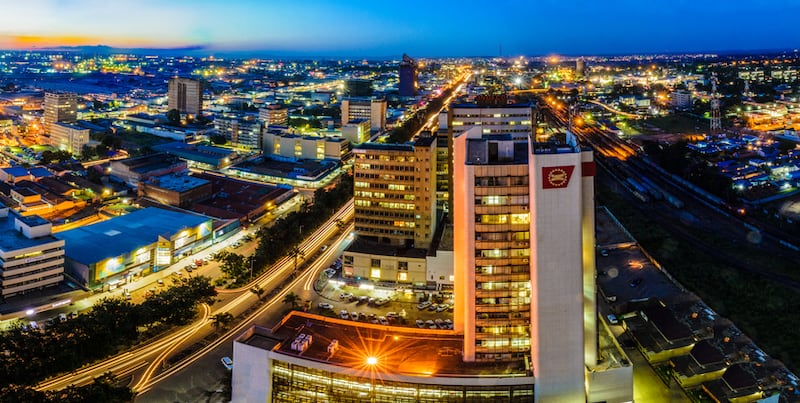
Dr Zulu sees the surgery as another milestone for the country. “We’ve come from very far – as a hospital and as a team of doctors, and as a nation as a whole. Working well with various partners, we have come now to develop human resources, skills in surgery, skills in radiology, skills in the lab, and various other sectors of the health system. To be able to say: ‘Yes, some of these cases we are now able to do.’
“That’s why we put up a multidisciplinary team, which was composed of general surgeons, paediatric surgeons, pathologist, radiologist, public relations, nursing, biomedical – a lot of people to make sure everything was in place.”
. . . and needing more team-mates
Zambia has a population about four times that of Ireland and is more than 10 times the size in area. However, there are more paediatric surgeons in Dublin than there are in all of Zambia.
And Ireland is not exactly over-subscribed.
In fact, while there is one paediatric surgeon per 100,000 people in Northern Ireland, in Zambia (population of nearly 17 million people), it's roughly one per four million people.
“We have five paediatric surgeons in Zambia,” says Dr Bvulani, before correcting himself. “One has just retired, so you could say we are down to four. Our population – 50 per cent are children below the age of 15.”
Dr Zulu was delighted when Dr Bruce graduated from COSECSA last year. “We were excited, because we knew the expertise [needed] in difficult paediatric surgical conditions.”
The numbers are so small, every single medical graduate counts, every upgraded skill is crucial – and every one "lost" to a hospital in Europe or North America hurts.
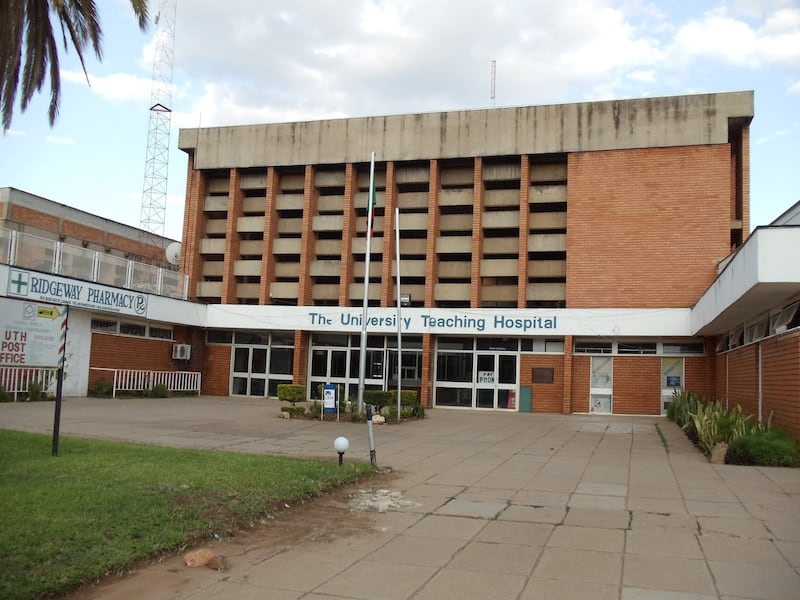
For over a decade now COSECSA and the Royal College of Surgeons in Ireland (RCSI) have been working together to increase the number, and expertise, of surgeons in sub-Saharan Africa, across twelve member countries: Burundi, Ethiopia, Kenya, Malawi, Mozambique, Namibia, Rwanda, South Sudan, Tanzania, Uganda, Zambia and Zimbabwe. The programme is funded by Irish Aid, the State's development arm, and works quite simply – trainee surgeons enter a membership or fellowship programme and undertake their clinical training under the supervision of a trainer in a accredited hospital. The academic part is delivered online, with workshops in each country. Examinations rotate between the member countries, with Kigali in Rwanda hosting exams in December, 2018.
One of the major advantages of the programme is that the trainee surgeon can stay in their home country – and therefore is far more likely to stay working in their home country long-term.
It is not rocket science, but it might as well be considering its importance in a deprived area of the world: to date, 260 specialist surgeons have graduated in the 10 years of the COSECSA/RCSI programme, with 85 per cent being retained in their home country after graduation.
"As you can see, the product is already showing," says Mable Katiba Phiri, a medical social worker in UTH. "If we can have many more taking such a career, I think we'll be leading somewhere. We need many to be trained, to be knowledgeable, so we don't lose life."
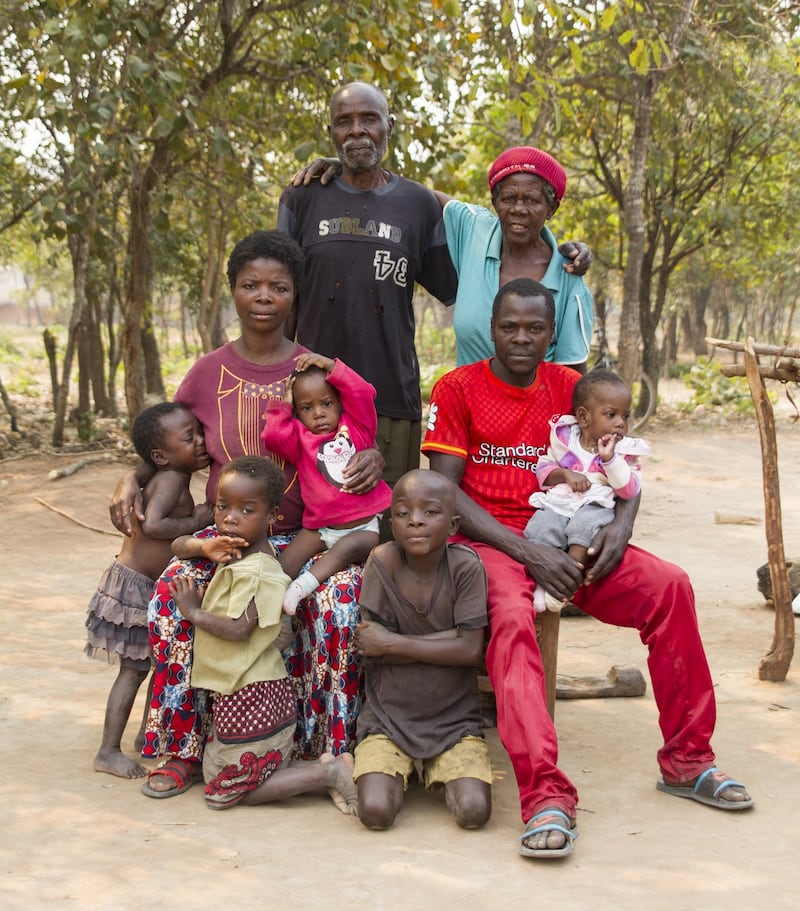
This is also a story about faith . . .
Christianity is on display in every corner of Zambia. Shops and restaurants often have religious titles, every school is named after a religious order or saint, even buses proclaim the good news. The country has many similarities with Ireland, though perhaps not modern Ireland.
“From now on I’ll just place my trust and faith in the hands of God, and still give gratitude to the people that have helped us because they are continuing to help us,” says Moses, the father of the twins. His wife agrees. “We give thanks, each and every moment and each and every day,” says Lydia. “I don’t believe that this has happened to me and I give thanks to God.”
The surgeons also regularly reference their faith when talking about the surgery. “It’s like God knew,” says Dr Zulu, when asked about the decision to go ahead with the surgery in Lusaka. “Maybe it was to test our skills.”
. . . and fate
“Before the twins were brought in, we were developing skills [in UTH]”, says Dr Zulu. “I’m a COSECSA fellow myself, I’m a general surgeon. Dr Bvulani, the lead surgeon, is a paediatric fellow of the college. So that was a good partnership.”
“Before it was decided to do the surgery in Zambia, a multidisciplinary team was set up,” says Dr Bvulani. “And it discussed the various options. And we looked at what sort of equipment we had available. And we looked at the expertise, in terms of how they were joined. They were joined at the liver, and we thought that was something we could handle, with the resources available here.
“In the past we’d probably have had them flown out of the country, but at that time we thought it was something we believed we could achieve, in Lusaka.
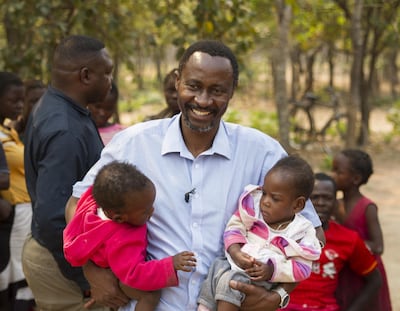
This is a story about triumph . . .
Dr Rae Oranmore-Brown was part of the team that separated the twins. She has a fellowship in general surgery with COSECSA, but has been doing paediatric surgery at UTH since 2013 and is currently completing a second fellowship, this time in paediatric surgery.
“We were divided into two teams when we were separating the twins. It was an incredibly moving moment when Dr Bruce Bvulani told the anaesthetist that we are now going to have the two babies on two separate operating tables. Because, of course, they were on the same operating table. And we were all prepared to put Mapalo on to the other operating table. Dr Bvulani said, ‘stand by to receive the twin on the other table’. And so the anaesthetists were ready to push the anaesthetic machine over. And as they separated, and I moved with one twin, there was a little sigh.

“And they had a camera so that people outside the theatre suite could see what was going on, and there was a little ripple of sound. Outside you could hear people cheering. And what I found extremely moving was that at the end of surgery the anaesthetists had rolled out the first twin to ICU and suddenly people realised the operation was over and it was successful. There was a crowd of well-wishers outside. And as they were getting ready to take the second twin to intensive care a group of nurses came to the front of theatre and stopped at the red line, and sang, in perfect harmony, a hymn of thanksgiving. It was incredibly moving the whole atmosphere of joy and thanks.
“And then Dr Bvulani brought the parents in and explained it had all gone well and it was so far so good, and that there was still a road to travel. And in very traditional Zambian fashion, they both spontaneously fell on their knees to thank him. It was incredibly moving. It was quite an experience.”
. . . and waiting for triumphs
In the days, weeks and months after the operation, another issue concerned those involved in the care of the twins.
The girls would obviously need regular care, therapy and observation by medical professionals. All of which was available in Lusaka, but not easily accessible in the remote village of Chabatama Chisembe in the Kawambwa region of north Zambia. The family’s living quarters were also far from ideal, with no electricity or running water being just part of the difficulty of living in the area.
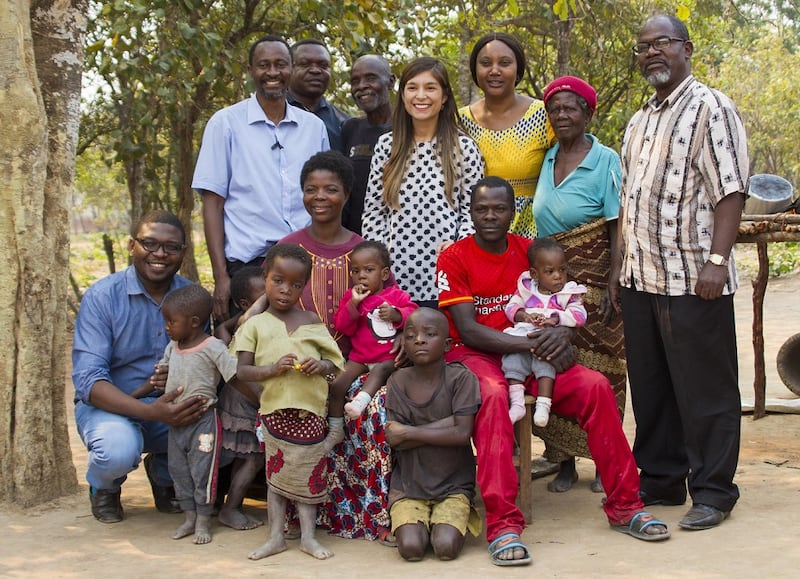
However, the bustling, relatively modern feel of Lusaka was a world away from what Moses and Lydia were used to. “They [parents and children] stayed in the hospital for a long time,” says Ms Phiri. “They missed home. So the moment the babies were operated on and they felt the babies were okay, they wanted to go home. You can’t force them to stay, you just have to release them, We had little information from Kawambwa. The [family] house is not okay.
“Looking at the babies from the operation, arrangements were made for the babies to stay for a short period in a children’s home [in Kawambwa]. And, after some time, they have been given back to the parents. We are happy to see them. We are so grateful, and they are being looked after nicely. We need to continue coming, so something can be done.”
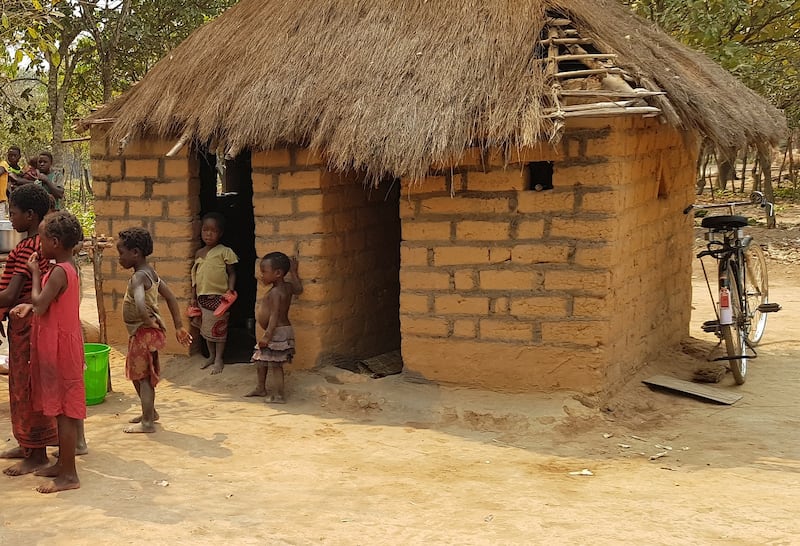
After such a huge moment for health care in the country, the family are determined not be forgotten. In the wave of goodwill and pride that followed the successful separation, authorities promised to help construct adequate living quarters for the family. Bricks arrived, but little else.
“The biggest thing I would like in my life at the moment is a house – a house to keep my children in, and any other kind of help that can be given to me and my children who have been separated [by surgery],” says Lydia.
“The children have been separated and it means they will keep being monitored by the people who separated them, they will want to see how they grow. And as they are growing they will have other needs, and they will continue to need support, they will need help to get an education, and I would not like them to grow up the way I did. I was brought up in the bush, and their father was brought up in the bush. We were brought up in the bush and lived in the bush all our lives – that cannot happen.
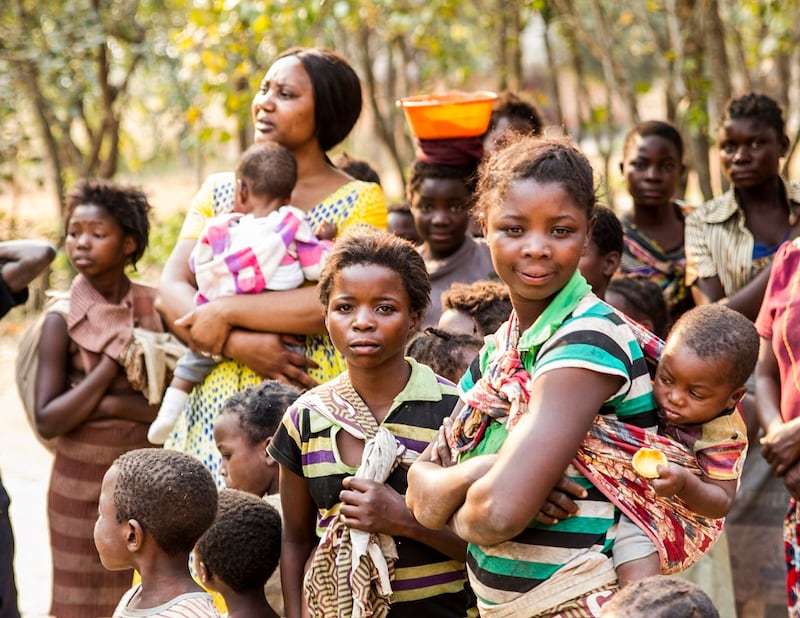
“I would like these children to live progressive lives, I would like them to get ahead in life. And not have to face the same challenges that myself and their father went through. That is what I would require from you people of God.”
Moses agrees. “It doesn’t matter where the house is built or bought, it could be Lusaka or Kawambwa, as long as the health of the girls is guaranteed,” he says. “I don’t know what will happen in the future. I didn’t know that they would be alive and well up to this point. What I would like to see is that the people of the country will not forget about us, will continue to think about us. Myself and my wife will not be able to do this alone so we will still need help from the people in the country.”



